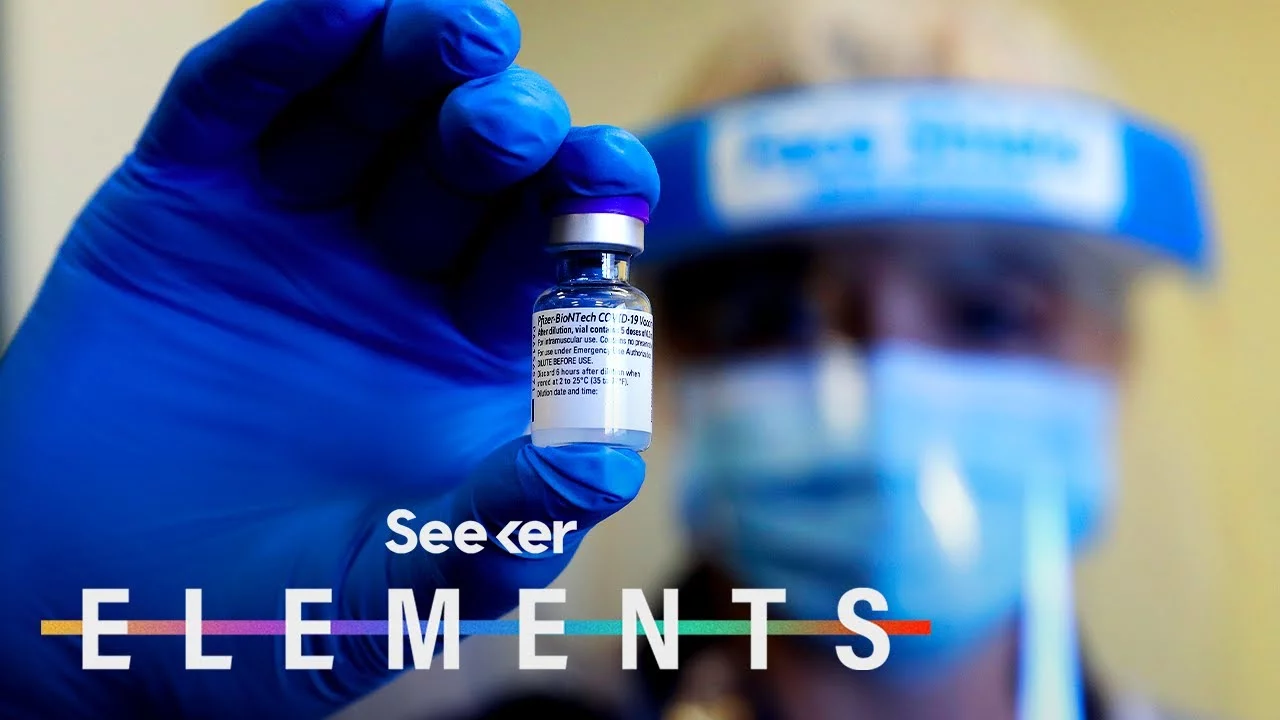So it’s official—COVID-19 vaccines are here! As of this time, at least one vaccine candidate has been approved by the UK, the US, Canada, Mexico, and may have even been approved by others by the time you see this. But what does this mean for the average U.S. citizen? When will we be able to get it, which one will it be, and what does all of this mean for the pandemic?
Let’s go over the frontrunners. The three vaccines currently farthest along in their development and approval processes are all using new technologies. That's Pfizer’s mRNA vaccine, Moderna’s mRNA vaccine, and AstraZeneca’s vaccine in partnership with Oxford University, which is what’s called a recombinant vector vaccine that uses DNA.
Right now, Pfizer’s mRNA vaccine is what’s being actively administered in countries like the UK, the US, and Canada. On December 18th, Moderna’s mRNA vaccine was approved in the US as well. So who gets it first? After more than 300,000 coronavirus deaths in the US alone, the CDC has recommended that healthcare workers get priority, as they’re the ones risking their lives every day treating those who need to be hospitalized. And although they’re first up on the list for vaccination, this first shipment of vaccines we’re hearing about is not going to be enough for every healthcare worker in the country to be vaccinated at once, so those on the front lines will be divided into risk categories based on where they work, with those who work directly with COVID patients having first access to the vaccine.
Also high on the priority list are the elderly, living in nursing homes and other long-term care facilities, as they are the age demographic most at risk for serious disease. The vaccination campaign for this population has also already begun.
The US federal government has given vaccines to each state based on total state population, notably not by the number of people in that state who may fall into a high-risk group. Then every state gets to decide for itself how to divvy up its available vaccine doses. Individual states get to decide which of their hospitals receive the vaccine first. Some states are prioritizing care homes over hospitals or vice versa, and states will have to decide how they want to handle populations like teachers, inmates, and other high risk groups. So to see how the vaccine will be distributed and to whom will depend entirely on your state’s decisions. But for most of the US, vaccines will reach the general public around spring of 2021 at the earliest.
So the US is facing what will be one of the biggest rapid vaccination campaigns in its history. Establishing a reliable supply chain on this timeline is complicated enough, but an added difficulty is that the Pfizer vaccine has to be stored at -70 degrees celsius for it to be stable. This makes transportation extra high stakes to ensure that no shipments of vaccine are wasted because they spent too long at a certain temperature. I don’t know if you’ve tried to keep ice cream from melting in a hot car, but if THAT’s hard, I think this is going to be a tricky one: especially because it involves everyone from public health organizations to airlines to shipping companies, all aiming to work together as seamlessly as possible.
The Moderna vaccine, also recently approved, doesn’t have to be kept at temperatures that are quite this low. It only needs to be at about -20 degrees celsius, which still sounds pretty cold but is actually about the temperature of a regular freezer. So hopefully as Moderna’s option becomes more widely available as well, it can cover any supply chain gaps created by the Pfizer vaccine’s extreme temperature needs.
The U.S., like many other wealthy countries, has pre-purchased hundreds of millions of doses of at least 6 different vaccines. But as more vaccine types become available in the future and more information comes in about each vaccine type and its efficacy, doctors may be able to eventually start prescribing a certain vaccine for certain populations.
Let’s talk about price, shall we? Pfizer’s vaccine is $19.50 a dose, which is around $39 per patient because each person will require two doses for the vaccine to be effective. Moderna’s vaccine is quite a bit more expensive at around $64-74 per course. And again, that’s two rounds of shots, whereas the AstraZeneca/Oxford vaccine is only $6-8 per course. The US government has announced that anyone on Medicare or Medicaid will be able to receive the vaccine at no cost.
So in this next year it’s unlikely that we’ll be able to choose which vaccine we get and how much it costs will depend on your state, your insurance, and which vaccine is available to you, which in itself just depends on supply chain logistics.
There’s also the challenge of getting people to take the vaccine at all. It’s been historically difficult to get people to trust vaccines, even ones that have gone through years of trials. And especially for the COVID vaccines, there have been many questions brought up like; it came out so fast, how do we really know it’s safe? Are the side effects something to worry about? Minority groups have been especially hard hit by COVID, so how many people from these groups has it been tested on?
We're getting a lot of information and getting it really quickly, and after the year we've had - it's understandibly overwhelming. But, overall, our key takeaways are this:
- I know it seems fast, but the vaccine did go through its safety trials and has been based on research that’s been developing for years.
- Money is what has helped accelerate this vaccine process. The simple fact is that the pandemic has affected the whole world and that meant the vaccine development had been prioritized over almost anything else, which rarely happens.
- We've seen what happens without a vaccine. The last nine months have shown us what a virus like this can do.
So a vaccine can only make our COVID situation better. Even with all of the challenges still facing us on a road to worldwide vaccination, it’s really exciting to see how science has come together to find a solution to one of our world’s most urgent issues, and as more information keeps coming out about all these important questions we’ve talked about today, we here at Seeker will make sure we're keeping you updated. It is heartening and exciting news, but we also still have to remember that the shot won’t be available to most of us until later in 2021. So until then we need to make sure we’re still doing everything we can to keep ourselves and those around us healthy as possible.


No comments yet